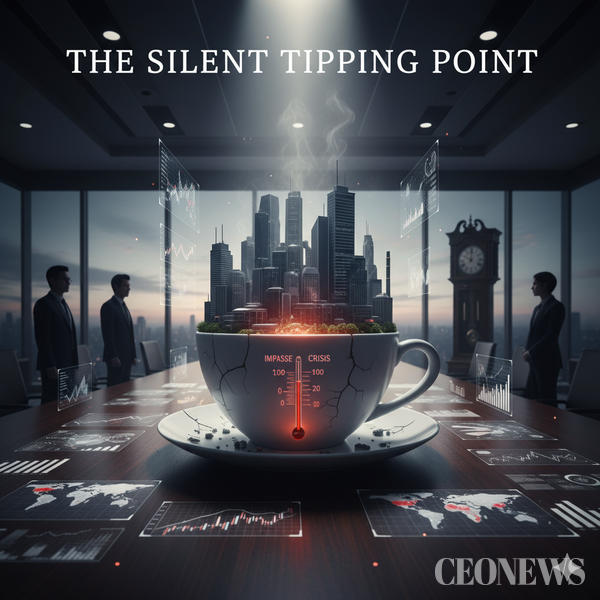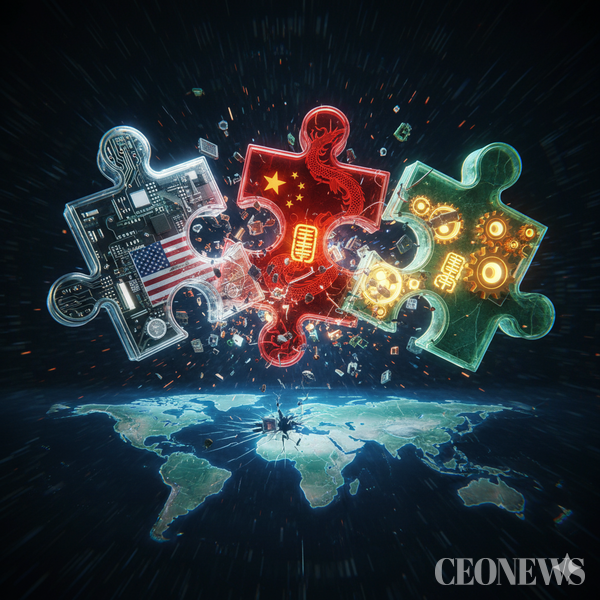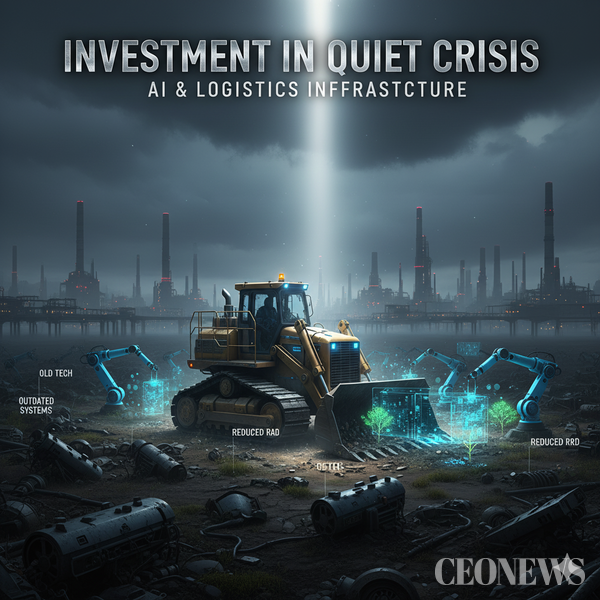Distress signals thrown by global CEOs
Korean companies are already closer to the critical temperature

[CEONEWS = Lee Jae-hoon, Representative Reporter] The dominant emotion currently ruling the global economy is neither "fear" nor "recession." Rather, metaphors like a "quiet crisis" or a "frog in slowly boiling water" are more accurate. The message confirmed in recent in-depth interviews conducted by Fortune with CEOs of global conglomerates was singular: "The world economy is not collapsing. However, it is clearly breaking 'slowly'."
Numbers and indicators still appear normal. U.S. employment figures are robust, and while consumption has slowed, it is not crashing. The semiconductor and AI sectors are near-booming. The problem is that the crisis is arriving "gradually," making it far more dangerous. And these signals of a quiet crisis are being transmitted to Korean companies at a much higher temperature.
'The Frog in Boiling Water'… The Consensus of Global CEOs

"If you drop a frog into boiling water, it jumps out immediately. But if you put it in lukewarm water and slowly raise the temperature, the frog doesn't sense the danger and is boiled to death."
This fable, frequently cited in business management, has become the most accurate metaphor to explain the global economy of late 2025. The 50-plus global CEOs interviewed by Fortune offered surprisingly similar diagnoses. The risk factors they commonly pointed out fall largely into four categories.
First, chronic high interest rates. "This is now the New Normal." The U.S. Federal Reserve has no will to lower rates. More than half of the U.S. CEOs interviewed predicted that "a return to the 3% range by 2026 is impossible." Jamie Dimon, Chairman of JPMorgan, warned, "The market still expects rate cuts, but considering structural inflationary pressures, the 5% level could become the New Normal." This goes beyond simply higher fundraising costs. It means a structure where the future value of companies is permanently discounted, and the benchmarks for Return on Investment (ROI) are being fundamentally reset. A CEO of a European manufacturing firm confessed, "In the past, we executed investments with a 7-8% return, but now it must be at least 12-15% to persuade the board."
Second, the entrenchment of geopolitical conflict. The triple collision of the U.S., China, and the EU has become daily life. The U.S.-China tech war has evolved into a stage of "micro-wars" by industry. Every point in the supply chain—semiconductors, batteries, AI, rare earths, bio—is a risk. A CEO of a semiconductor equipment manufacturer stated, "In the past, we pondered whether to enter the Chinese market; now, we ponder the timing of our withdrawal." The EU is building a "third wall" by reinforcing manufacturing subsidy packages. European industrial policies combining regulations and subsidies, such as the Carbon Border Adjustment Mechanism (CBAM), Critical Raw Materials Act (CRMA), and Net-Zero Industry Act (NZIA), are effectively accelerating the "fragmentation of the global market." A CEO of a German auto parts company lamented, "We must now execute different strategies in three separate markets, rather than one global market."
Third, the rapid bifurcation of consumption. An economy where "only high earners survive" has arrived. Over 60% of U.S. consumer goods and retail CEOs responded that "consumer stamina is becoming polarized." High-income groups still purchase luxury and premium goods, but those in the middle class and below are defecting en masse to budget brands. Walmart CEO Doug McMillon diagnosed, "Our customers are comparing prices down to the dollar. This is more severe than during the 2008 financial crisis." This implies that South Korea’s domestic demand slump is not merely a local phenomenon but part of a global trend.
Fourth, the collapse of corporate investment sentiment. The era of "absence of conviction" is here. Past crises were driven by fear, but the current crisis spreads through "numbness." A U.S. manufacturing CEO put it this way: "In 2008, everyone knew it was a crisis. Now, we aren't even sure if it is a crisis or not. That is the real crisis." Indeed, the growth rate of capital expenditure (CapEx) for S&P 500 companies plummeted from 8.2% in 2023 to 3.1% in 2024. Companies are hoarding cash but delaying investment. This is a signal that while the economy functions on the surface, the engine for the future is turning off.
Why Korean Companies Are More at Risk

The "slowly boiling crisis" felt by global CEOs is transmitted to Korean companies at a much faster velocity. This is because the structural characteristics of the Korean economy raise the "water temperature" more quickly.
First, the 'sensitivity to external shocks' of a nation with 70% export reliance. Korea's exports account for over 40% of its GDP. When manufacturing is included, effectively more than 70% of the economy is directly linked to global demand. If just one factor shakes—U.S. consumption slowdown, China's real estate deflation, or EU carbon/subsidy regulations—Korean manufacturing takes a direct hit. In particular, the three major pillars of semiconductors, automobiles, and batteries are all tied to "geopolitical variables." A Chief Strategy Officer (CSO) of a domestic conglomerate noted, "We are acrobats walking a tightrope between two giants, the U.S. and China. If we lean to one side, we get hit from the other." Data supports this risk. According to the Korea International Trade Association, exports to China in Q3 2024 decreased by 5.2% year-on-year, and auto exports to the EU dropped by 8.7% due to stricter carbon regulations. In contrast, Germany's exports to China fell by only 2.1% and Japan's by 3.4% during the same period. This indicates Korea's structure is more vulnerable to external shocks.
Second, prolonged high interest rates create the 'worst combination' for the Korean economy. Korea's household debt-to-GDP ratio is 105%, the highest level in the OECD. When high interest rates persist here, a chain reaction battering consumption, domestic demand, the service sector, and employment becomes reality. According to Bank of Korea data, the average household loan interest rate as of October 2024 is 4.8%, 1.9 percentage points higher than in 2021 (2.9%). This translates to an additional annual interest burden of approximately 18 trillion KRW. This money is siphoned directly out of consumption. For companies, this creates the worst combination of "slowing overseas demand and sluggish domestic demand." A retail industry CEO diagnosed, "In the past, if exports were poor, we held on with domestic demand, but now both are collapsing. This situation is a first since the 1998 Asian Financial Crisis."
Third, supply chain restructuring. Korea's risk as a 'sandwich nation' is fatal. The U.S. strengthens its alliance-centric supply chain (Friendshoring), while China accelerates its strategy for technological self-reliance. Korea cannot fully board either ship. This "intermediate zone" increases long-term corporate uncertainty. For instance, Samsung Electronics is investing $44 billion in a Texas foundry plant while simultaneously pursuing expansion of its Xi'an semiconductor plant in China. SK Hynix is reviewing an Indiana plant in the U.S. while struggling to maintain utilization rates at its Wuxi plant in China. This forces a situation not of strategic clarity, but of "strategic ambiguity." A semiconductor executive lamented, "We have to tell both sides 'we are on your side,' while being suspected by both. This generates tremendous cost and inefficiency."
The Common Message of Global CEOs: "Crises Come in Quiet Moments"

The keywords most frequently mentioned in the Fortune interviews were "anticipation" and "resilience." This suggests two things. First, data does not yet clearly articulate the crisis. Second, however, CEOs are already feeling it. Microsoft CEO Satya Nadella stated, "Signals of crisis appear first in customer behavior changes, not financial statements. We see customers hesitating to purchase, delaying contract renewals, and demanding more discounts."
What is particularly improved is that many CEOs said, "We must increase investment aggressively rather than reduce it." Amazon CEO Andy Jassy declared, "Investment during a recession is the only opportunity to widen the gap with competitors. We will actually expand our investment in AI and logistics infrastructure." This is paradoxical. Leaders who sense the crisis are choosing offense over defense. Because in a quiet crisis, most competitors do not move. The calculation is that this timing is the golden time for market reshuffling.
A Warning to the Korean C-Suite: "Now is the Time to Watch the Flow, Not the Numbers"
What does this quiet crisis mean for the CFOs, CEOs, and CSOs of Korean companies?
First, 'strategic design' has become more important than finance. The current danger does not show up in quarterly earnings. However, cracks are already forming in business models, supply chains, workforce strategies, and capital allocation. The "boiling water" is quiet but fatal. A research center head at a domestic securities firm warned, "Korean companies' financial statements still look solid now, but if you simulate three years out, more than half enter the danger zone. The problem is that those three years will arrive in the blink of an eye."
Second, the three axes of supply chain independence, energy, and AI have established themselves as criteria for survival. The investment areas commonly emphasized by global CEOs are: AI-based productivity innovation, supply chain redesign and diversification, and securing energy costs and raw material stability. This aligns exactly with the vulnerable zones of Korean companies. In particular, AI is no longer a choice but a necessity. According to a recent report by the Boston Consulting Group (BCG), the productivity gap between companies that actively adopt AI and those that do not is projected to widen from 15% in 2024 to 35% by 2026. A domestic manufacturing CEO worried, "If AI adoption is delayed, we could be permanently eliminated from the competition."
Third, "Agility" has emerged as the most critical leadership capability. In a quiet crisis, slow decision-making is fatal. Now, the 'speed of decision-making' by leadership determines enterprise value in large corporations. According to recent research by McKinsey, companies with fast decision-making (executing major strategies within 6 months) had 25% higher profitability and 40% higher stock returns on average than slow companies (12 months or more). A strategy executive at a domestic conglomerate said, "In the past, a perfect plan was important, but now, executing with 70% certainty and correcting course is more effective."
The 'Critical Temperature' for Korean Companies is Already Accelerating
The crisis global CEOs speak of now is not a problem of visible figures. The economy is holding on. Companies are holding on. However, it is clearly a "process of slowly approaching the boiling point."
For Korea, that speed is faster. This is because the four-pronged risks of exports, interest rates, supply chains, and domestic demand are heating up simultaneously. What is more dangerous is that most Korean companies do not clearly perceive this "temperature rise." However, a crisis does not always arrive with the same face. It reveals itself quietly, slowly, and only at the decisive moment. The 2008 financial crisis had a clear signal called the bankruptcy of Lehman Brothers. Now, there is no such "Big Event." That is why it is more dangerous.
Now is the time to read the flow, not the numbers. And that flow speaks clearly:
"The cost of survival strategies for Korean companies will increase exponentially the longer they are delayed."
A frog only realizes the danger once the water starts to boil. However, a CEO must be able to jump out when the water is lukewarm. That moment is right now. CEONEWS will continue to dissect how this "quiet crisis" is approaching Korean companies and what leadership, strategies, and data are required. The temperature of the water is already rising. Is your company ready?

